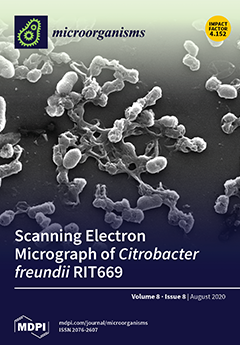Enterococcus faecalis is one of the major causes of urinary tract infection, showing acquired resistance to various classes of antimicrobials. The objective of this study was to determine the prevalence of drug resistance and its genetic determinants for
E. faecalis clinical isolates in north-central Bangladesh. Among a total of 210
E. faecalis isolates, isolated from urine, the resistance rates to erythromycin, levofloxacin, and gentamicin (high level) were 85.2, 45.7, and 11.4%, respectively, while no isolates were resistant to ampicillin, vancomycin and teicoplanin. The most prevalent resistance gene was
erm(B) (97%), and any of the four genes encoding aminoglycoside modifying enzyme (AME) were detected in 99 isolates (47%). The AME gene
aac(6′)-Ie-aph(2”)-Ia was detected in 46 isolates (21.9%) and was diverse in terms of IS
256-flanking patterns, which were associated with resistance level to gentamicin. Tetracycline resistance was ascribable to
tet(M) (61%) and
tet(L) (38%), and mutations in the quinolone resistance-determining region of both GyrA and ParC were identified in 44% of isolates. Five isolates (2.4%) exhibited non-susceptibility to linezolide (MIC, 4 μg/mL), and harbored the oxazolidinone resistance gene
optrA, which was located in a novel genetic cluster containing the phenicol exporter gene
fexA. The
optrA-positive isolates belonged to ST59, ST902, and ST917 (CC59), while common lineages of other multiple drug-resistant isolates were ST6, ST28, CC16, and CC116. The present study first revealed the prevalence of drug resistance determinants of
E. faecalis and their genetic profiles in Bangladesh.
Full article






